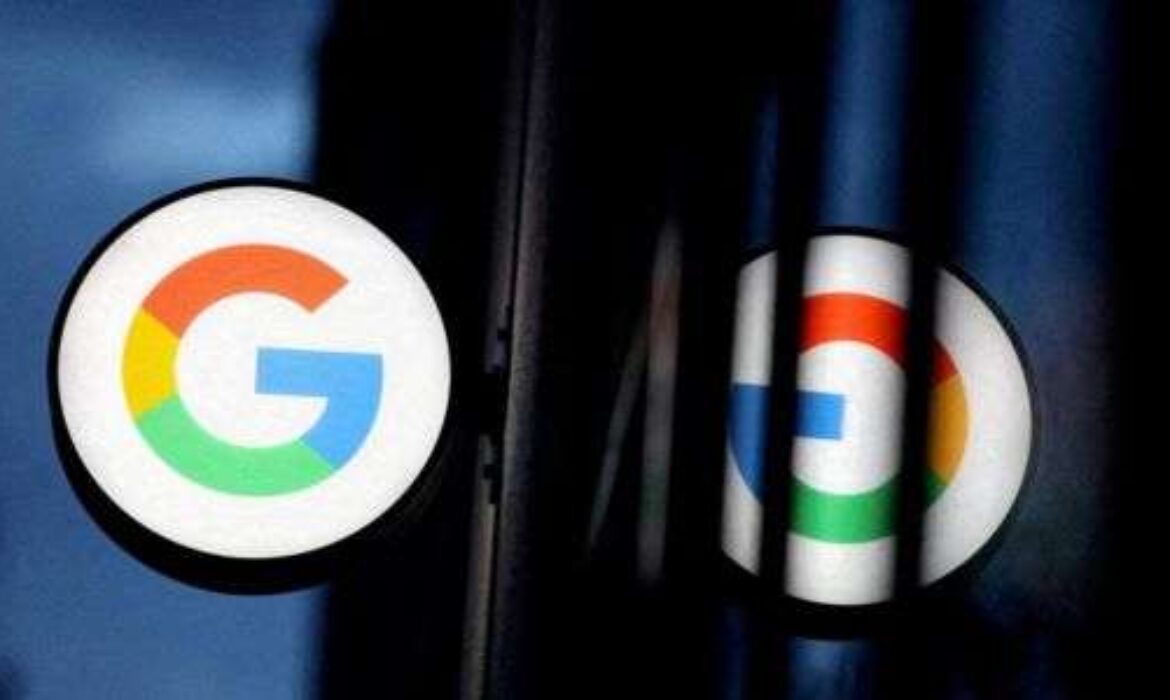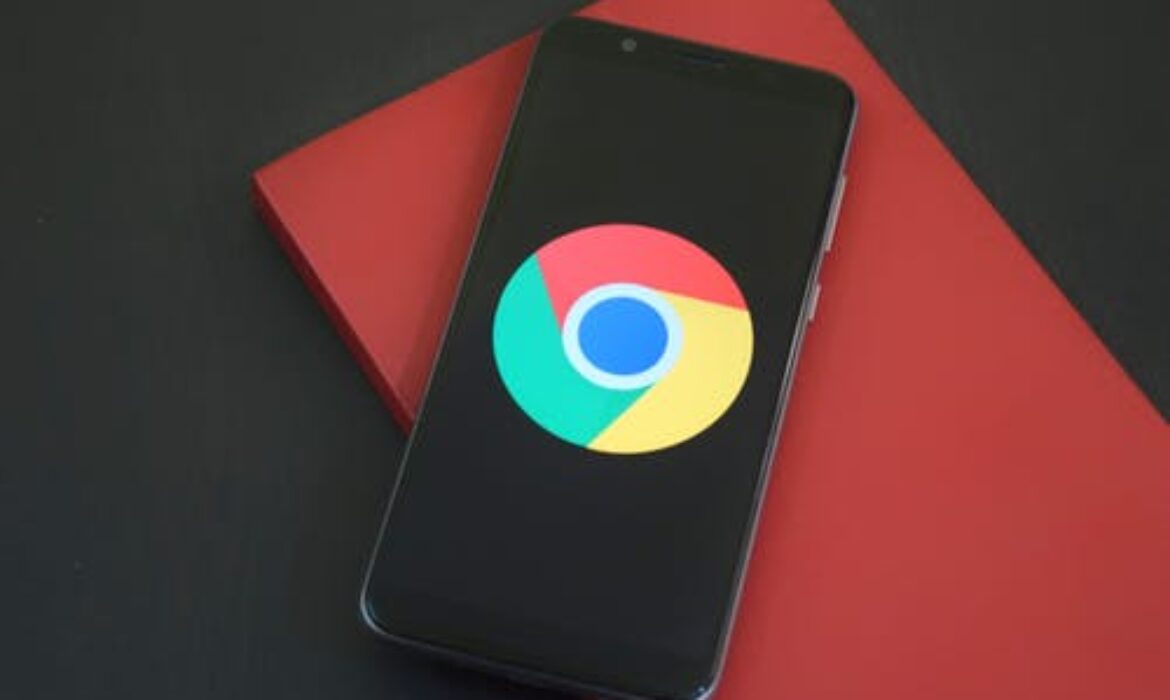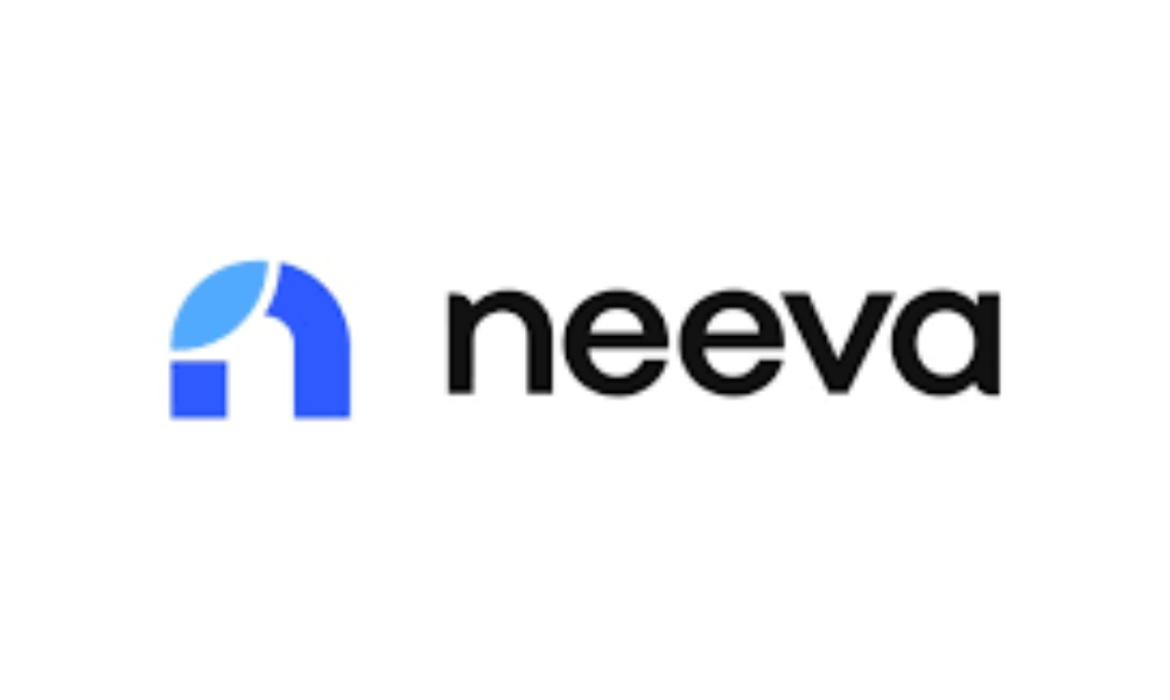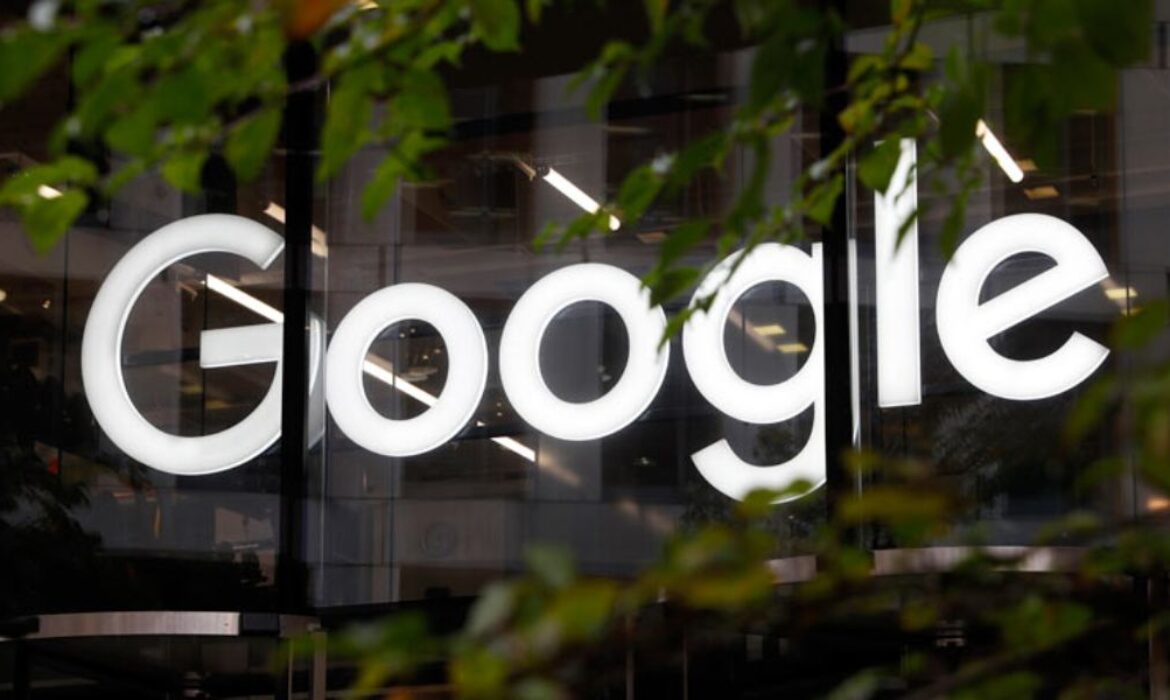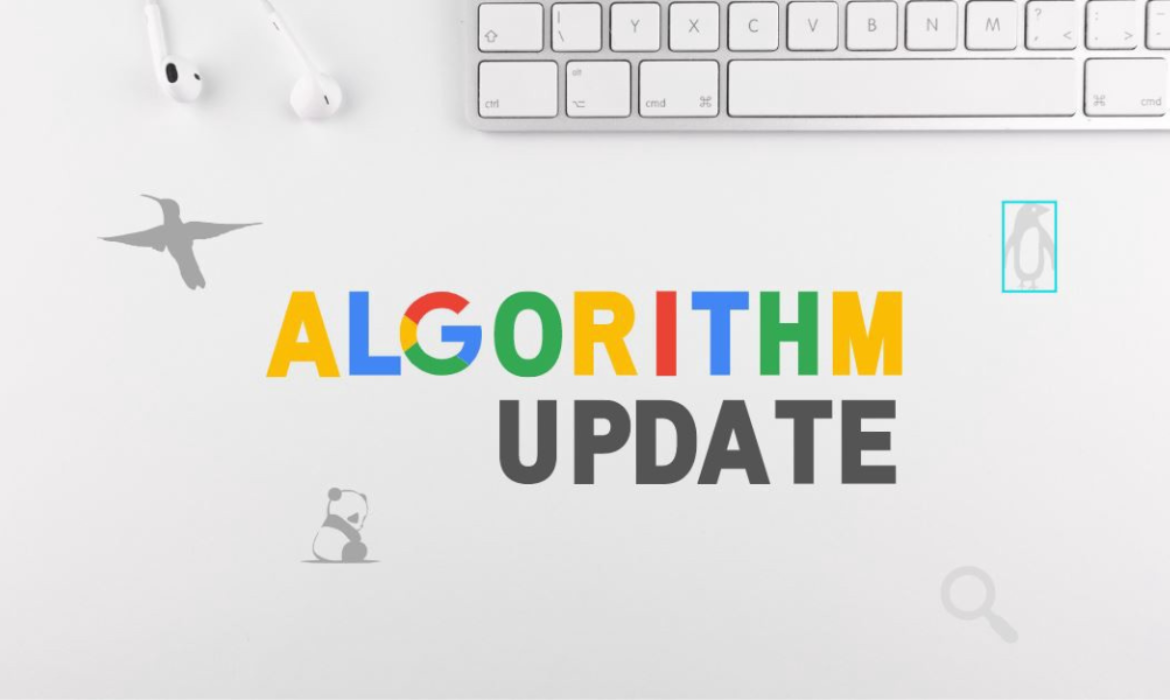Yahoo Spins Out its Enterprise Engine Vespa for AI-Scaling Excellence
Yahoo announced the spin-out of Vespa, its enterprise AI-scaling engine to increase the reach of its technology platform. Vespa, which makes extensive use of data and AI online, will be a distinct and independent company. Since 2017, Vespa, a division of Yahoo, has served a range of external clients’ AI requirements, including Spotify, Wix, major financial institutions, and others. Searching through millions of documents inside a large enterprise, providing superior data-driven online services, or enabling scalable AI-based language apps are a few examples. 150 essential applications that are crucial to the business’s operations are supported by Vespa technology. These programs are necessary for real-time content personalization across all of Yahoo’s pages and for managing targeted advertising inside one of the world’s biggest advert exchanges.
What is Vespa?
In 1997, Vespa debuted as a cutting-edge search engine. Later, as a result of the Overture acquisition in 2003, it joined Yahoo. Vespa went open-source in 2017 and started providing services to outside customers in 2021. Through the spin-out, Yahoo will have a share in the new company and a director seat on its board.
Vespa – Yahoo’s spin-out
The spin-out intends to increase Vespa’s technology platform’s usability at a time when retrieval-augmented generation (RAG) requires the company’s artificial intelligence (AI) processing. With around 150 technology apps supporting close to one billion users, Yahoo will continue to be Vespa’s top customer and strategic investor. These programs process 800,000 inquiries every second, which is astounding. Vespa will also keep powering Yahoo’s internal solutions for search, dynamic recommendations, and providing users with targeted adverts and content.
Read More: Microsoft Advertising Enhances Search and Ads with Generative AI
Benefits of entity spin-out
Vespa will be able to benefit the rest of the globe greatly if a corporation is built around it. Additionally, it will enable businesses already reliant on Vespa to take advantage of cloud service efficiencies. More businesses will use it to solve online AI and big data concerns. Vespa will be able to quicken the creation of new features, enabling its users to produce even better solutions more quickly and inexpensively. Deploying on a cloud service or keeping with an open-source distribution are both possible options.
Thanks to its decade-long work on fusing AI and large data online, Vespa delivers features and scale that exceed any comparable solution. The demand for a platform that offers a solid basis for these solutions has never been greater as the world begins to use current AI to solve actual business problems online.
Here’s what they said
Jim Lanzone, CEO of Yahoo said,
Vespa has been a critical component to Yahoo’s AI and machine-learning capabilities across all of our properties for many years. While remaining Vespa’s biggest customer and a key investor, we’ll continue to leverage all that Vespa has to offer while simultaneously creating a new business opportunity that allows other companies to harness its technology as an independent entity.
Jon Bratseth, CEO of Vespa added,
Given Yahoo’s incubation and advancement of the technology over the years, now is the time to spin out Vespa and allow other companies to take advantage of Vespa Cloud in a meaningful way. With Yahoo’s continued investment and support, Vespa will be able to maintain its position as one of the largest and most sophisticated machine learning and database management platforms globally.
Read More: The AI Search War: Microsoft & Google Compete for Search Engine Leadership
US Govt. vs Google: Google Accused of Breaking Antitrust Laws
The commanding search engine Google is currently engaged in a civil lawsuit in Washington, where it is facing its greatest legal challenge yet. It is accused of breaking American antitrust laws. The tech business which is synonymous with online information searching, has used its enormously effective search engine to create a large industry encompassing cloud computing, advertising, and YouTube. The Alphabet-owned business grew up when antitrust regulation was less strict. This is especially against IT companies who create creative and frequently free methods for people to browse and utilize the internet.
The Department of Justice’s (DOJ) complaint focuses on two allegations: Google Search and whether the business utilized illegal agreements to oust competitors and harm customers and advertisers in the process. Google pays businesses billions of dollars to be the browser’s default search engine. In recent years, attempts to regulate Google and other digital titans have fallen short. In the absence of regulations, the government is attempting to regulate web competition and restrain internet gatekeepers using antitrust laws that date back 113 years. The trial’s verdict is expected to have effects that far beyond Google’s operations. It will reveal whether US regulators’ attempts to put Google’s practices on the radar and control the market will be successful.
Why is Google facing an antitrust lawsuit?
In a lawsuit filed more than three years ago, the DOJ and 38 states accused Google of illegally maintaining a monopoly in the online search and advertising sectors. In terms of market share, Google holds around 90%. The government further asserts that it upholds its supremacy by entering into limited contracts with phone and browser manufacturers including Apple, Mozilla, Samsung, and Verizon. The majority of American phones now come pre-installed with Google’s search engine, which the government claims is unlawful. Pre-installing or marketing competing search engines is prohibited per Google’s distinct contracts with Android-based mobile partners.
The DOJ claims that Google excludes competing search engines through these arrangements. Additionally, the government claims that Google’s billions of dollars in payments to partners have prevented rival search engines like Microsoft Bing and DuckDuckGo from gaining sizable market share. According to the DOJ, Google’s strategy of forcibly preloading its services onto smartphones running its Android software assisted the internet giant in keeping a monopoly. The states also contend that Google did not fully integrate Microsoft’s Bing into its well-known advertising engine, Search Ads 360. They contend, however, that Google favors advertising on its own platform and directs advertisers’ money there. This is accomplished by forcibly denying marketers the chance to promote choices that would best aid them.
Read More: Google Unveils Fresh Consent Management Rules for EEA and UK
What harm do Google’s agreements bring?
According to the Department of Justice, Google’s exclusive agreements with Apple and other parties restrict competitors from successfully vying for search market share or enhancing their products. Other businesses, like Microsoft, are unable to conduct enough searches to enhance their goods since Google freezes up all browsers and receives all inquiries. According to the authorities, it offers Google an unfair competitive edge. Due to Google’s agreements, innovation is further stifled because the firm is not required to enhance its search engine in order to retain market share. The DOJ also claims that Google increased the cost of advertising on its search sites by abusing its monopoly power.
How is Google countering the allegations?
Google claims that by giving browser providers what they want—a single default search choice for users—through its agreements with Apple and other parties, it fosters competition. Google claims that its commercial tactics are accepted and legal. It claims that the arrangement is comparable to a cereal manufacturer paying retailers to stick their cartons at eye level when it charges to appear in Mozilla’s Firefox or Apple’s Safari. Both businesses select Google because it consistently outperforms competitors rather than under the influence of revenue sharing or other inducements. Because consumers can alter their settings to change the default search engine, Google argues that the agreements do not preclude its partners from giving other search engines.
Google claims that users of Android smartphones can choose another search engine instead of the one that comes preloaded on their device. But because so few users do so, it cannot be interpreted as evidence of exclusive practices but rather as customers sticking with the better product. The leading search engine has additionally asserted time and time again that it faces many successful rivals in online search. The business cites TikTok and Amazon as thriving competitors. Google claims that despite the fact that they do not run general-purpose search engines, users go to these competing websites to find goods and content instead of using Google. The California-based business has added that the government is using faulty logic to single out the business due to its notoriety. The business thinks its success is a result of producing the best search engine.
Kent Walker, Google’s chief legal officer said,
We look forward to showing at trial that promoting and distributing our services is both legal and pro-competitive.
Read More: Google Boosts Performance Max with URL Contains Targeting Tool
What does the government need to prove to prevail in the trial?
The government must demonstrate that Google controls the economic sectors at the center of the case through monopoly power. They will attempt to persuade the judge to adopt a definition of a search engine that is rather rigid. They will also attempt to persuade the judge to disagree with Google’s claim that the search engine market is occupied by websites like Amazon and social media platforms like TikTok. The more competitive the market, the simpler it is for Google to claim that it lacks monopoly strength.
Additionally, the government must demonstrate that Google’s business relationships significantly lower competition between search engines. They must demonstrate that it prevented them from striking comparable agreements with device manufacturers and acquiring new clients. The DOJ will likely need to demonstrate how these company activities directly or indirectly affected consumers. This is highly likely to influence the judge’s decision to hear antitrust complaints.
What is the future for Google if it loses?
The decision might diminish Google’s importance and impact in the technology sector if it loses this case. There can be substantial repercussions for the business. It might restrict Google’s ability to contend in the market and reorganize the balance of power in Silicon Valley. The U.S. and its state partners are not seeking a monetary fine. Instead, they are asking for an injunction that would prevent Google from carrying on with the allegedly anticompetitive tactics. The firm could be disbanded by the court as a remedy. However, another trial will determine Google’s fate if the court finds that the firm violated the law. The DOJ could also request that Google be prohibited from entering into exclusive distribution deals. In doing so, it will allow competing search engines a greater presence on consumer electronics.
Paul Gallant, a tech-policy analyst at Cowen Washington Research Group stated,
Breaking up the company over unlawful payments to equipment manufacturers seems unlikely relative to the harm.
What does U.S. antitrust law say?
It is not against the law for a business to enter into an agreement with one client that excludes others. Such exclusive agreements are typical and receive little regulatory attention. When a firm lacks market power, it is unable to significantly impact the competition. However, if a large and strong business stops competitors from entering the market, exclusive agreements may be illegal under antitrust laws.
The U.S. – Microsoft Antitrust Trial
In 1998, the government filed a lawsuit against Microsoft. The company was acquitted of attempting to monopolize the market for internet browsers for Windows systems. In the court case, the DOJ won. It opened the door for competitors like Google and Facebook to succeed in the future. The trial court held that Microsoft had combined Internet Explorer with Windows OS and illegally attempted to obstruct Netscape Navigator. According to the DOJ, Google imitated Microsoft’s strategy from the 1990s. They state that it was in order to establish and preserve its own dominance in internet search and advertising. The comparison, according to Google, is incorrect.
Read More: Antitrust Complaint Filed Against Google in the EU!
Google’s Triple Treat- Unleashes a Trio of Updates to Elevate User Experience
Google is embracing the future of greatness. Three game-changing changes from the tech superpower will revolutionize user experience across platforms. These updates, which range from enhanced usability to seamless disruptive capabilities, will enhance user journeys to a higher level. This article explores in detail these innovative improvements that will affect our online life.
Generative Search Experience Update
The AI-generated answers in Google’s latest search generative experience can now display playable videos in addition to photos. Google stated in their blog, “With our generative AI-powered Search experience (SGE) you can quickly get up to speed on a new topic, uncover quick tips for your specific questions or discover products and things to consider.” Google has included generative AI in its search engine so that users can benefit from it. The upgrades that will simplify your life are listed below.
Enjoy images and videos with your searches
It’s been said that seeing something for oneself helps one grasp it better. Google recently added images and videos to its search results, and individuals who have joined Google Labs will soon be able to access the upgrade. As a result, when someone queries something, it returns relevant material including photographs and YouTube videos in addition to a text description. For instance, if consumers look up how to remove stains from marble, they can easily find guidance and pertinent material online.
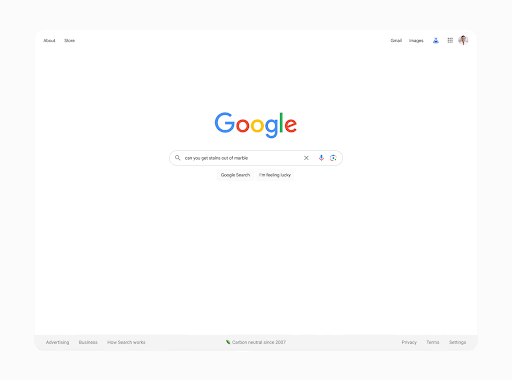
Credit: Google
Amplify Curiosity
Users can search the web for useful information when particular topics pique their attention. Google offers them relevant links to aid in their search results along with an AI overview. Additionally, each link on the website has the published date attached, and they are constantly working to improve the AI model.
Turbocharge your insights
Google recently revealed significant speed improvements that cut AI snapshot time in half.
Google AI updates indicate the sources it has accessed information from, setting it apart from rival AI chatbots like ChatGPT. It is useful to cite and refer to links when researching.
Doesn’t it all sound cool? But wait, there’s more!
Mobile Lookup Updates
In order to improve users’ search experiences on the Google mobile browser, Google has unveiled additional updates. With expanded search concepts, popular and trending topics and themes, and other improvements, searching is now simpler.
Google’s Search Serenades
Google now provides search suggestions pertinent to the website the user is currently browsing. “Related to this page” is the feature’s name, and it offers consumers additional options to look through.
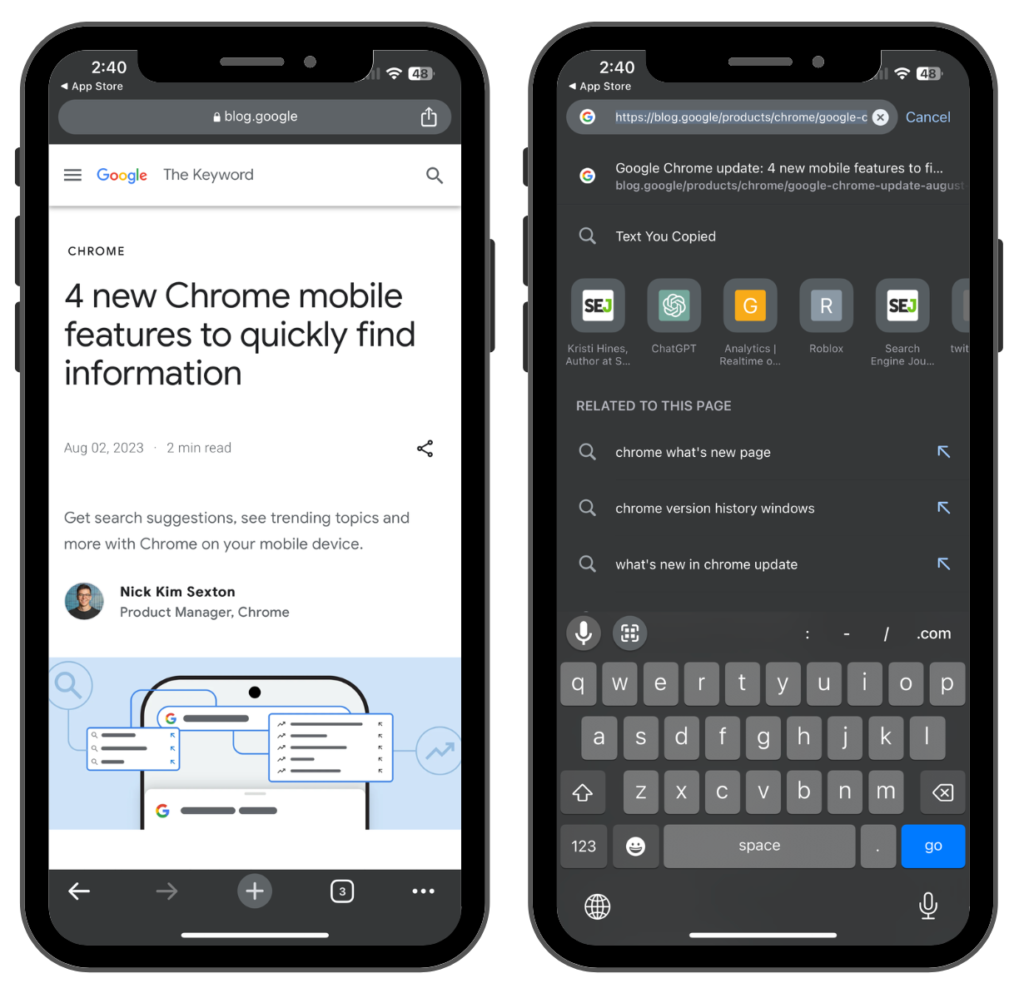
Image Credit- Search Engine Journal
The Google Trendspotting journey
The upgrade also makes it easier for users to access address bar-based trending topics and searches. The iOS version of this feature will be released later this year, but it is only available in the Chrome browser for Android.
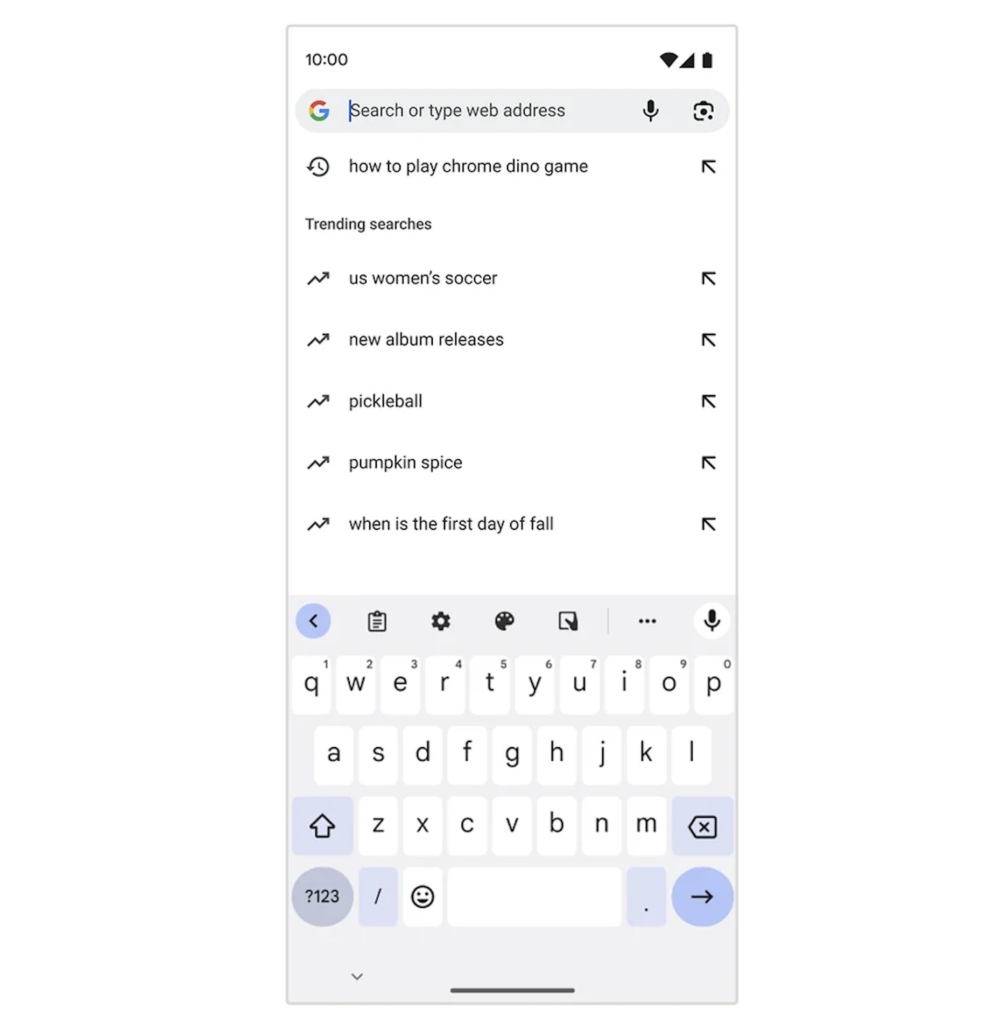
Image Credit- Google
Search for similar terms
Users may now search for a word or term immediately from the page they are currently viewing thanks to Google’s touch-to-search upgrade. This was introduced a few years ago on Android. Now that the tool has been updated, they can use it to get relevant search results. For instance, the user can select a word and learn more about it. This is if they are reading about a subject and come across a term that interests them.
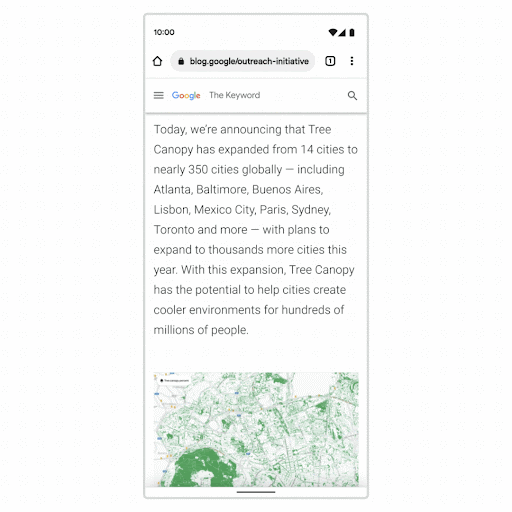
Credit: Google
Intensify your search
In addition, users will be able to view 10 queries rather than just six suggestions to improve their search experience. The first results will be those most pertinent to the search query. After that, visitors may scroll down to search for further possibilities.
Google Analytics 4 Updates
Google has released several enhanced capabilities on the Google Analytics 4 platform. These capabilities are aimed at improving campaign optimization and helping advertisers better understand user behavior patterns. The upgrade offers enhanced metrics, particularly for iOS campaigns, and a deeper look at targeting tools and performance uplift possibilities. This is how app marketers will benefit:
Audience tools
Unnotified audience suggestions
This tool will help untap the audience of the current app to target those users who are not reachable via push notifications. Only 37% of users enable push notifications, according to Google, meaning brands are missing out. This technology allows marketers to interact with users when they download apps
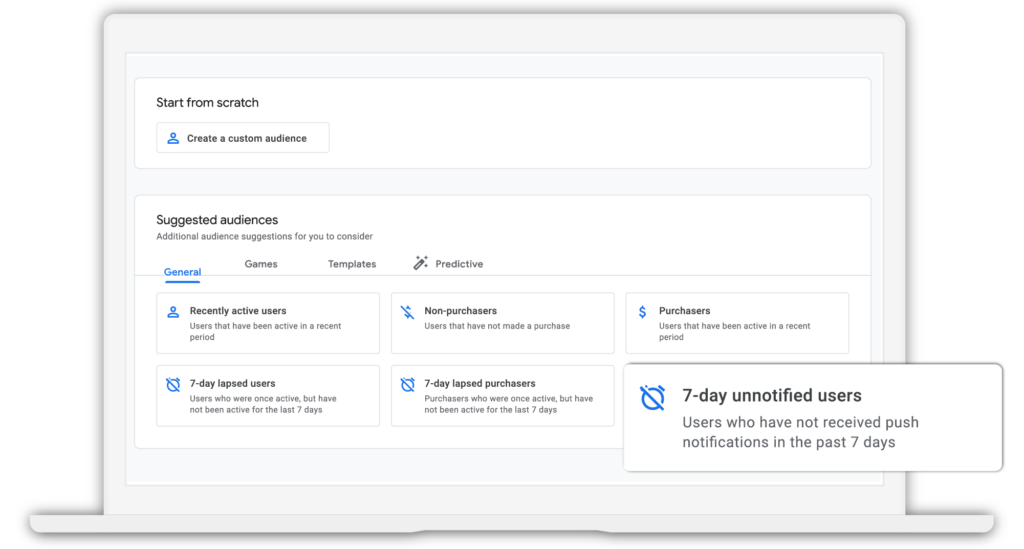
Image Credit- Google
Relevant app users
Google will automatically identify the most appropriate app consumers for the app engagement promotion if the advertisers have set up a demographic in GA4 for both app and web users.
GA4 Audience Builder in Google Ads
Google will offer the option to create effective GA4 audiences directly in Google Ads during ad campaign setup in the upcoming weeks.
Improved performance
App marketers may automatically enhance app campaign metrics using consented, signed-in data. Google’s experimentation analysis shows that app campaigns generated 10% higher conversions for every dollar spent. Through the GA4 property, advertisers can activate Google Signals to make them available.
Improved marketing optimization for iOS
In order to help marketers better understand the efficacy and measurement of their iOS initiatives, GA4 makes privacy-centric solutions possible. This is how-
- To enhance multichannel reporting and inference, GA4’s feature enables app integration with SKadNetwork. Additionally, it offers a tool for setting up the SKadNetwork so that conversion data is gathered without identifying information escaping the user’s device.
- By including a consenting user’s phone number as a sign-in method, advertisers can optimize their campaigns more effectively.
- With geo-targeted conversion lift measurement, advertisers can now measure iOS app advertisements’ gradual effects with increased accuracy.
With these innovative enhancements, Google simplifies the user experience and puts every search, trend, and recommendation at our fingertips. With these modifications, the tech giant is becoming more empowered, perceptive, and motivating. Only exciting times lay ahead for the users as Google keeps expanding and experimenting with technology to stay relevant in the ever-evolving landscape.
Read More: Google Ads Enhances CTV Advertising
Neeva : An Ad-Free Search Engine Launched By Former Google Ads Head
After a long tenure as Google’s head of search and advertising products, Sridhar Ramaswamy left the business three years ago. His experience of managing the world’s largest ad-supported firm was one of the most powerful in advertising, and it prepared him for virtually any leadership post in data-driven marketing.
This is why, it was quite the shocker when Ramaswamy co-founded Neeva, a search engine with the purpose of never including advertising. After one year of testing with a 10,000-person user base, Neeva has now been launched to the public.
Ramaswamy went to record to say –
“ We started Neeva because we love search, the technical problem. But we thought the long-term consequences of a primarily ad-supported model for the search engine was more and more about the advertiser, rather than the user or the customer.”
In a conversation with AdExchanger, Ramaswamy went on to speak at length about his motivation and ambitions regarding this project.
On being asked why he decided to launch a new search engine, the former Google head said that he considers this market to be incredible and dominated by one single player.
The reasoning behind a new search engine, Ramaswamy says, is to have a fundamentally distinct business model as a strong base of a new product that would allow Neeva to compete more successfully than other search engines that try to replicate Google’s offerings.
When the obvious question of – why is Neeva different – was thrown in the air, Ramaswamy said-
“We describe it as a private and personalized search experience. And it is a subscription search engine.”
He added that as of now, they have 10,000 users. And about the pricing, Sridhar Ramaswamy said that they are still deciding on how much to charge for the subscription, but it will hit the ballpark of $5 per month across the US. Furthermore, he said that his team is still in the process of creating a search stack.
AdExchanger then asked – “Why the commitment to an ad-free search engine?”
Ramaswamy replied that Neeva’s logic is based upon the fact that any ad-supported business model is built on collecting large amounts of data; and over time, the user experience takes a back seat to advertising. This makes it hard to distinguish an ad from organic content.
Moreover, he says that at Neeva, nobody will have to wonder about affiliate links. The aspiration behind this search engine is to create trust and make it user-oriented.
Ramaswamy also said during this conversation, that if publishers provide Neeva with content, then a portion of the revenue will be shared with them.
When asked if there were ways for marketers to reach users apart from advertising, Ramaswamy said that they have worked with SEO players and site owners to keep their content relevant.
They have also created a product known as Spaces, which can be conceived as a user’s thoughts and images related to a specific topic.
He adds further that the aim of Neeva is to bring together customers with content creators on the internet, without taxing anyone for it.
Innovation In Google During The Tough Times Of COVID
While most of the brands are struggling to survive during the tough times of pandemic, Google has set its goals right for the whole year. It is innovating itself without any trouble. Every month Google targets to enhance itself, according to the growing demand of the society. Google makes sure, that it fulfills the need of its users by providing them with exactly what they desire.

Image credit – Business Insider
Recently, Google introduced two new features for its search portals. One of the features is designed, and dedicated to the Black community. The feature will help in the upliftment of the community in society and will aim to end the injustice against them.
Due to the rise of anger in the community against the centuries-long injustice experienced by the community, several brands came forward to show their support towards the community. Google was amongst them.
#BlackLivesMatter!

Image credit – change.org
To fulfill his promise, the CEO at Google, Sundar Pichai recently added a feature to the map and Google search listing.
This feature is launched to empower the Black community. The feature will highlight businesses owned by the Black community helping them grow. However, only those members can avail of the benefit whose business has verified profiles in the US. Also, the business must be owned by a member of the black community.
Those businesses highlighted under this feature will be marked by an image(as shown below). The symbol will signify that the business is owned by a member of the Black community.

It is said that the step was taken to provide a financial boost to the community. It is a foreseen step to finally end the orthodox discrimination towards the community. Google is also partnering with U.S. Black Chambers, inc. To provide better features like Analytics helping the businesses groom and blossom.
In a statement regarding this following statement was issued by Google:
“As part of our $300 million commitment to support under-represented entrepreneurs, we’re integrating the attribute into the digital skills training programs we offer Black business owners through Grow with Google Digital Coaches. And through Google for Startups Accelerator for Black Founders, we’re starting our work with the first cohort of 12 startups.”
Google is keen to develop the feature even more and is seeking ideas internally. According to the management, they have already received more than 500 creative ideas to get this model to develop more brilliantly.
The company is also working on better and much strict “Policies against hate and harassment”
“About this ad”- More power to the user!

Image credit – 9to5Google
With a more transparent approach towards their users, Google has launched a new feature popularly known as “About this ad”.
To implement this feature Google will be launching new tools. It will help the users gain information about the advertisement they are receiving. It will help enhance security and will increase user privacy on the digital platform.
According to Google spokesperson, the vision is designed for a “thriving internet where people around the world can continue to access ad-supported content, while also feeling confident that their data is protected”.
“But in order to get there, we must increase transparency into how digital advertising works, offer users additional controls, and ensure that people’s choices about the use of their data are respected not worked around or ignored.”
Read More: Google Ends All Gossips: Revealed Fee Structure For Advertisement Tools

Image credit – AdEspresso
For a long time now, tech giants like Google are have faced a lot of criticism. Most of those were linked to their explicit behavior when it comes to money and user privacy. After being criticized and called upon several times by different government authorities for blind approach in the business during the usage of advertisers’ money, Google has finally decided to be more transparent with its business policies and proposals.
Therefore, Google shared a list of pricing for its tools used by advertisers for the advertisement. It was a huge step by Google, since before this release, advertisers were kept in the dark about the spent of their share of the money, and the profit earned by Google.
The tools for which Google revealed the prices include, DV360, Google Ads, ad manager, and its publisher tech.
The revealed prices are as follows:
These prices were revealed by Google in a series of articles and blog posts.
The prices are in the ratio of percentage for a $1 amount spent by an advertiser on an advertisement, divided between the publisher and Google.
- Google tech: Publishers – 69%, Google – 31%
- DV360: Publisher – 87%, Google – 13%
- Ad Manager: Publisher – 82%, Google – 18%
- Google Ads: Publisher – 86%, Google – 14%
- Ad sense by Google: 68% share taken by Google of the total spent by the advertiser.
Google has never been so transparent in regards to its prices, the sources say that this new transparent face of Google is due to the ongoing legal hearing conducted by the state attorney general and the Department of Justice.
Read More: Google Updated Its Demand-Side Platform With DV360!

Image credit – marketingland
Innovation has always been the motto of the company. To make sure that the advertisers at Google are equipped with the best tools available in the market, it recently launched its new self-service toolkit known as Display & Video 360.
The tool is launched to change the landscape of the advertisement. Display &Video 360 is a gift to its advertisers by Google.
Earlier, advertisers used the tools to make a hypothetical projection while running an online marketing campaign. The most crucial question that bothered the advertisers was the amount of audience that they will reach with the campaign. To make sure it’s no more a hit and try show for the advertisers, Google launched DV360.
With the DV360, the advertisers can now create a new campaign and check its reach to the audience as the tool provides a duplicate view of the campaign. The duplicate view will help the advertisers view the exact or say a more accurate number of audiences that they will reach with the campaign. Hence, no more blind bets!

Image credit – Matech Today
The tool has better forecasting capabilities, giving the advertisers a glimpse of the future for their campaign. It is also a better solution for the media planners as it provides them with a large proportion of benefits as better access to the tool as they always have a larger role to play.
The most crucial answer answered with the tool is, “how many unique people can I expect to reach with my overall campaign across any open auction display and video inventory as well as YouTube?”
According to Anudeep Pedditi, Programmatic Manager, OMD NZ:
“Once we commit to a reach objective, neither underachieving nor overachieving is an option. Display & Video 360 gives media planners the accuracy they need to effectively plan across all our programmatic campaigns.”
The Tools main aim is to provide the following features to its advertisers:
-
-
-
-
Focus
-
Options For Buying
-
Optimization And Reporting
-
Security
-
Conclusion
-
-
-
Read More: How Google’s Page Experience Will Change the Face of SEO in 2021

Image Credit – Edkent Media
Google will launch a new algorithm for its page experience and design. The new model will be based on user experience.
The new algorithm will surely affect SEO and web traffic. Therefore, to make sure that the advertisers are not affected by the changes, Google has announced that they will apply the changes in 2021. They have promised to inform upfront, at least six months beforehand.
An early reminder will help advertisers to prepare themselves for the changes.
However, Google made it clear that the new algorithm will be even stricter in ranking the web pages. If the user experience of a web-page is poor, Google will not rank the page on to the top list.
Google has also published a detailed document dedicated to the page experience criteria.

Image credit – Cardinal Path
The new algorithm will consist of some core vital features. This feature includes the following:
- Largest Contentful Paint (LCP): Measures the loading performance of your webpage.
- First Input Delay(FID): Measures the user interaction with the page.
- Cumulative layout Shift: Checks the stability factors of your webpage.
The Accelerated Mobile version (AMP) will also play a major role in the ranking of your page, as will be a metrics for the page experience.
Also, good content will always play a lead role in the page ranking.
As per a statement:
“While all of the components of page experience are important, we will prioritize pages with the best information overall, even if some aspects of page experience are subpar.
A good page experience doesn’t override having great, relevant content. However, in cases where there are multiple pages that have similar content, page experience becomes much more important for visibility in Search.”
Hence, entrepreneurs, startups, and businesses should be well prepared for the new changes.
Read More: Every 2020 Google SERP Feature Explained: A Visual Guide

Image credit – Pinterest
Have you ever imagine the amount of traffic Google experience in a minute, month, or year?
Well, here are some fun facts, every second there is an approximate of 63,000 search queries entered on Google search.
Also, near to 2 trillion searches are conducted every year!
Isn’t it amazing? However, you might ask, why does it matter?
Let us understand!
Google holds an approximate 72% market share of search engines. To make sure that your webpage is listed on the top of the list of Google search results you must have an understanding of Google SERP (Search Engine Result Page).
What is SERP? And, what all it provides to the advertisers on Google?

Image credit – OverthinkGroup
The Search Engine Result Page of Google has gone through a lot of changes according to the user view. It has become much more dynamic, relevant, personalized, and helpful.
Now the search engine of Google is equipped with several enhancements that use structured data. The search page consists of visual enhancement, better index, and optimization for the website. You must be aware of all these changes if you are planning for a better organic ranking for your website.
Here is the new enhancement for the search page of Google:
- Direct answer Box
- Rich Snippet
- Rich cards
- Knowledge Graphs
- Knowledge Panels
- Local Pack
- People also ask
- Image Pack
- Site Links
- Newsbox
You must be equipped with the knowledge of these for better results in organic ranking.
Read More: Rejoice Small Retailers: Selling Products is Now Free On Google Shopping

Image credit- Shopping&payments
MSME’s got adversely affected due to the widespread of COVID-19. Several small and medium scale businesses have lost their source of income due to the sudden breakthrough of this epidemic.
Therefore to make sure that these businesses sustain the effects of the crisis, Google is allowing small retailers to list their products for free on Google Shopping.
Explaining this decision, Bill Ready, President of Commerce at Google cites the fact that it is difficult for struggling businesses to pay for Google shopping listings at this time.
“And as consumers increasingly shop online, they’re searching not just for essentials but also things like toys, apparel, and home goods.
While this presents an opportunity for struggling businesses to reconnect with consumers, many cannot afford to do so at scale.”
Earlier, Google charged its customers as Pay per click (PPC). It can also be seen as a tactic by Google to compete with Amazon in the market of e-commerce.
Read More: Privacy Sandbox By Google Shows Backdoor To The Third-Party Cookies.

Image credit – https://searchengineland.com/figz/wp-content/seloads/2020/02/privacy-sandbox-cookie-stock-1920.jpg
Two years ago, Google announced that it will discontinue the usage of third-party cookies in its browser, which is Google Chrome. Since the announcement, several speculations surfaced, to understand its effects on internet traffic and advertisement. However, Google seems determined about the elimination, and this year Google announced “Privacy Sandbox” a step towards the replacement of third-party cookies.
It is developed to provide a secure browsing experience to its user.
According to a spoke person from Google, “This is an early-stage concept, and we don’t have more details to share right now, We plan to publish updates and progress in GitHub as part of the process.”
The concept uses a new algorithm designed by performing “Bit Request Signal Experiment”.
Privacy Sandbox was launched in August. The idea was to innovate ad recurrence and behavioral advertising. It aimed to help them work on the web without using third-party cookies. A mega event was organized, 163 giant tech organizations like Apple, Facebook, Axel Springer, The Washington Post, Criteo, The Trade Desk, and even Google participated. All are requested to share their views via. World Wide Web Consortium or GitHub to help the project succeed.
However, according to the Google developers, it is still in its initial stage and there is a lot of work that is needed to be done in this field.
Read More: Google pledges $800 million to coronavirus relief, including Ad credits

Image Credit – BusinessInsider
Google CEO Sundar Pichai explained:
“As the coronavirus outbreak continues to worsen around the world, it’s taking a devastating toll on lives and communities. To help address some of these challenges, today we’re announcing a new $800+ million commitment to support small- and medium-sized businesses (SMBs), health organizations and governments, and health workers on the frontline of this global pandemic.”
The commitment includes:
- WHO and other health organizations will get $250 million for advertisement.
- MSME’s and NGO’s will get $200 million.
- An additional $15 million in cash will be granted by Google.org to non-profits to bridge the gap between SMB’s.
- Those small businesses that are already active for a year with Google advertisement will get the help of a total of $340 million in Google ad. They will receive the credit in their accounts and can spend it by the end of 2020.
- The academic and research institutions in the field of COVID research will get $20 million.
- Financial support will be provided to the organizations to increase the production capacity for life-saving equipment.
However, not everything went great for Google during this tough time of COVID:
Read More: Google Cuts Marketing Budgets by 50%, Freezes Hiring.

Image credit – Brayve Digital
Key Points
- Budget cuts and hiring freezes across marketing and across Google.
- For the second half of 2020, Google is cutting its marketing budget to 50%.
- The cut is due to the reduced expenditure on advertisement by the brands during the time of the crisis.
- The development comes in less than a week from where Google is scheduled to discuss Q1 2020 results on 28th April.
According to a statement released by email:
“There are budget cuts and hiring freezes happening across marketing and across Google…We, along with the rest of marketing, have been asked to cut our budget by about half for H2.”
A company spokesperson said in an emailed statement to CNBC,
“As we outlined last week, we are re-evaluating the pace of our investment plans for the remainder of 2020 and will focus on a select number of important marketing efforts….We continue to have a robust marketing budget, particularly in digital, in many business areas.”
…we continue to invest, but will be recalibrating the focus and pace of our investments in areas like data centers and machines, and non-business essential marketing and travel.”
Read More: Google Withhold Programmatic Data, Advertisers Pulls Back Ad Spend

Image credit – Search Engine Land
As quoted by Digiday, the Head of Display at the U.S based retailer said,
“Google’s ad exchange didn’t make the list primarily because they’re not willing to give us any transparency or data around not only their take rates on our media sped but also anything we could already pull from our demand-side platform.”
“We’re seeing Google’s ad exchange become slightly less of the total pie,” said Jay Friedman, president at programmatic agency Goodway Group to DigiDay.
”I don’t have a percentage but it’s less but not significant.”, he further added.
The advertisers registered their doubts and raised concerns regarding the non-transparent behavior of Google. However, this must have been resolved after the release of the price list for its advertising tools by Google.
Google Is All Prepared To Compete with Amazon In E-commerce Market.
Google is all set to reveal its new initiative to fight the dominant Amazon in the e-commerce business.
After a series of serious attempts made by Google, to end the monopoly of Amazon in prior consecutive years, that is in 2013, 2014, 2017, and 2019. 2020 seems to be severely crucial as more customers are turning towards the online market every day, due to the COVID virus spread across the world.
Google announcement was a clear indication in the direction of its plans to spread its roots in the online market. Google has declared to charge lesser sales commission from the sellers on its platform and will also let third-party sellers like Shopify to use its platform.
Currently, the commission rates of Google’s online sales platform range from 5 percent to 15 percent depending on the category of the product.
Google might dominate the field of knowledge and information when trying to search for information. But, when it comes to searching and buying goods online, Amazon is the first choice of consumers. Due to consumers’ first choice as e-commerce, Amazon is spreading its wings in the advertisement market, which is a clear threat to Google’s core source of earning.

Google has taken several hits during these years while competing with Amazon. In a seven-year-long battle with Amazon, Google introduced several products to compete with Amazon. However, none of them succeeded. One such attempt at Google was Google Shopping Express! The service launched in 2013, offered one-day delivery for groceries. The users can take an annual membership for $95 and can avail of faster service. However, Google ended up shutting down the project.
After its failed attempts with Google Shopping Express, Google decided to convert it into Google online Mall. The Google online Mall included retailers like Best Buy and Target. In 2017, Google partnered with Walmart. This deal was supposed to bring many fortunes to the Google online market, but unfortunately, the partnership ended too soon.

Image credit- Shopping&payments
However, never giving up Google, added a buy button to its search engine. The online-button allowed the users to directly purchase the search engine, with the help of their credit and debit cards.
For an effective competition strategy with Amazon, Google brought in Bill Ready. Bill Ready was a former executive at PayPal.
The announcement in April came as a piece of happy news for the retailers. Now, retailers can list their products for free on Google online market listing. However, early the sellers had to buy the ads to get their products listed with Google. By this step, Google is expecting to attract huge audiences!
Mr. Ready, in an interview, described the position of E-commerce across the world. According to him, there is a wide range of audiences who are shopping online for their needs. Although, there is just a handful of platforms entertaining all of them.
“We want to make sure selling online is easy and inexpensive,” said Mr Ready. Follow
According to Google spokesperson, the changes will be visible to the people in the USA. Those who are already listing products on Amazon can use the same listing on Google, that is, without making any changes to the format.
The aim of Google is to take over Amazon, or at least, for the time being, be the biggest competitor. However is a 20 minutes long conference, Mr. Reddy shy out to take the name of their competitor, even for once.
Even when asked the question to name the largest rain forest in South America, Mr. Ready decided to dodge the question.
Although, he stated:
“Consumers benefit from a diverse and thriving ecosystem of sellers.” Adding that, “There is no one player that can serve all the needs of consumers.”
How Google’s Page Experience Will Change the Face of SEO in 2021
Google announced a new ranking algorithm -Page Experience- designed to evaluate web pages based on the user’s experience.
Will this impact my traffic and SEO? Yes.
But the good news is — it will be rolled out in 2021. Google said it will provide six months’ notice beforehand. So, there is ample time to prepare for it.
What is Page Experience?
Page Experience measures aspects of how a user perceives the experience of interacting with a web page. Simply, it means if Google thinks that the user experience is poor on your pages, it may not rank those pages as highly as of now.
Here is an example that Google doesn’t want users to experience.

Image Credit: Search Engine Land
In the above GIF shared by Google, the user was trying to click on “No, go back “ but because of an install bar pop up, it pushed the whole page down and led the user to click on “Yes, place my order” accidentally.
The purpose of this Google Page Experience update is to ensure that the sites that rank on top are not creating experiences that users hate. This shift is a step to a big change in SEO.
Google has a detailed developer document on the page experience criteria. The new Page Experience update uses the existing Google ranking factors -page speed, mobile-friendly, safe browsing, HTTPS, presence of intrusive ads, and now also layout shifts Google is refining metrics around speed and usability and these refinements are under Core Web Vital.
What are the core web vital?
They include real-world, user-centered metrics, that give scores on aspects of pages such as load time, interactivity, and the stability of content as it loads.
The core web vitals and existing Google ranking factors make the new Page Experience algorithm.

Image Credit: Google

Image Credit: Search Engine Land
These are the core web vitals factors:
- Largest Contentful Paint (LCP): Measures the Loading performance and should occur within 2.5 seconds of when the page starts loading.
- First Input Delay (FID): Measures the user’s interactivity with the page and pages should have an FID of less than 100 milliseconds.
- Cumulative Layout Shift (CLS): Measures visual stability of a page which means pages don’t have jumping buttons. The page should maintain a CLS of less than 0.1.
Additionally, a web page should not contain malicious or deceptive content, mobile-friendly, content easily available to users, and should be servers over HTTPS.
Preparation for this update
Google is adapting its algorithm to closely align with its aim of showing the sites first that the user likes. According to Google, changes will not happen before early next year, so no immediate action is needed.
This update will use Accelerated Mobile Pages (AMP), page experience metrics for scoring purposes if you have an AMP version of your page.
Good content will still be the most important factor despite a poor page experience.
“While all of the components of page experience are important, we will prioritize pages with the best information overall, even if some aspects of page experience are subpar.
A good page experience doesn’t override having great, relevant content. However, in cases where there are multiple pages that have similar content, page experience becomes much more important for visibility in Search.”
The future will say how big will this update be, till then start preparing for it as sites will get better with this update.
Roundtable with Industry experts
Here are the tweets from the roundtable that Google had with industry folks – Glenn Gabe and Aleyda Solis:
First, the update will be page-level like some other algos (https, mobile-friendly, etc.) But if there are many pages that have the same issues, they can all be impacted. Hard to say yet how much impact that would be. Could be lightweight, maybe stronger. But again, page-level. pic.twitter.com/4yiu49vKp7
— Glenn Gabe (@glenngabe) May 28, 2020
The Page Experience update will combine the new core web vitals with previous factors like mobile-friendly, https, mobile-popup algo, etc. I asked if those would be changing strength-wise. They didn't have anything to share about that. My guess is no, but anything is possible. pic.twitter.com/2EG4uXfhDa
— Glenn Gabe (@glenngabe) May 28, 2020
If a new core web vital is added in the future, it should not shock anyone. It won't be out of the blue. The metric will be written about, talked about, documented, etc. pic.twitter.com/GjA9okmmYb
— Glenn Gabe (@glenngabe) May 28, 2020
If a page has an AMP alternate that is shown to the user, then Google will take the AMP page into consideration to assess the page experience signal, since it’s the one that the users see.
…
— Aleyda Solis 🇺🇦 (@aleyda) May 28, 2020
…
* The signals taken into consideration for "page experience" will evolve and be updated yearly.
* And a confirmation: The new Page Experience as ranking signal won't be happening until next year, so there's enough time to improve things if there's the need 🙂
— Aleyda Solis 🇺🇦 (@aleyda) May 28, 2020


